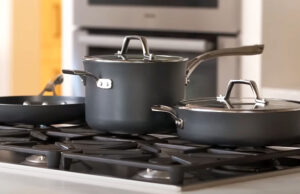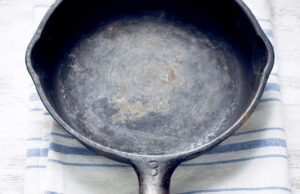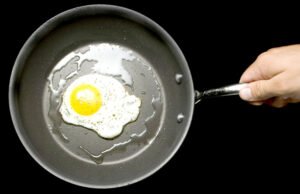As an Amazon Associate, I earn from qualifying purchases at no extra cost to you.
Whirlpool Dishwasher Fills and Drains but Doesn’t Wash?
Have you ever started your Whirlpool dishwasher only to find out later that it filled and drained but never actually washed? It is so frustrating because the dishes come out dirty, and you end up washing them by hand anyway. The truth is, this problem is more common than you may think. In this article, you will see clear answers and fixes to get your dishwasher working again.
Check the Spray Arms for Blockage
When your Whirlpool dishwasher fills and drains but does not wash, the first thing to check is the spray arms. These arms spin around during the wash cycle and spray water on the dishes. If they are blocked, broken, or stuck, then the water cannot reach your dishes. Without this spray, the cycle runs but the dishes remain dirty. That is why this part needs close attention.
Spray arms often get clogged with food bits, grease, or even small bones. As a result, the water cannot come out with enough pressure. Sometimes the holes in the spray arms are so small that a tiny seed or piece of rice can block them. If you do not check them, the dishwasher keeps filling and draining, but it will never clean. So, it is always smart to look at them first.
To check, remove the lower and upper spray arms. Hold them under running water and see if it flows out freely. If not, use a toothpick or thin wire to clear each hole. Do not push too hard, or you might break the plastic. A toothbrush with warm, soapy water also helps to clean grease. Once clean, reattach the arms and spin them to make sure they move without sticking.
Another issue is that sometimes spray arms crack or loosen. If they wobble too much, they cannot spin correctly. You might notice unusual noises when the dishwasher runs. If the arms are damaged, it is better to replace them. They are not very expensive, and new ones can make your dishwasher feel like new again. Always check both upper and lower arms carefully.
Also, make sure that big dishes or pans are not blocking the arms. A large plate or pot can stop them from moving. Place big items on the sides or back so the spray arms can spin freely. When loading, always think about how the water needs to reach all dishes. Small changes in how you load can prevent future issues.
- Check spray arms for clogs.
- Clean holes with wire or toothpick.
- Replace damaged or cracked spray arms.
- Do not block movement with large dishes.
- Spin arms by hand to test movement.
Inspect the Wash Motor
Another common reason why a Whirlpool dishwasher fills and drains but does not wash is a faulty wash motor. This motor powers the pump that sends water into the spray arms. If the motor does not work, water cannot spray with force, and the dishes remain dirty. The dishwasher may sound like it is running, but no real washing happens.
You may notice that the dishwasher is quiet when it should be spraying water. Or you may hear a humming sound instead of a strong spraying noise. That hum is often the motor trying to run but stuck or burned out. If this happens, the dishwasher still fills with water and later drains it, but the wash part never takes place.
To test, open the door after the dishwasher starts washing. Be careful because water may splash. If the dishes are dry and there is no spraying sound, the wash motor is likely not working. You can also check the bottom filter area. If you do not feel water movement, that is another sign. Some people may even smell a faint burned odor if the motor is bad.
The wash motor can sometimes be cleaned if it is clogged with debris. Small food bits or glass pieces may stop it. You can remove the bottom panel of the dishwasher to access it. Check for blockages before assuming the motor is broken. But if cleaning does not help, then replacing the motor is the only solution. It may require a technician, but handy people can do it with the right guide.
- Listen for spraying noise during wash cycle.
- Check for humming sound or no water movement.
- Inspect motor for clogs or debris.
- Replace motor if cleaning does not fix it.
- Ensure strong water pressure is restored.
Look at the Filter and Pump
The filter and pump play a huge role in how well a Whirlpool dishwasher cleans. The filter catches food bits, and the pump moves water around. If either is dirty or clogged, the dishwasher fills and drains but does not wash. Dirty filters are one of the most common problems people forget to check. But cleaning them is quick and simple.
Over time, grease, soap scum, and food build up in the filter. When this happens, water cannot flow freely to the pump. As a result, the spray arms do not get enough water. You might think the dishwasher is running normally, but your dishes come out dirty. Regular cleaning avoids this, but many people skip it until the machine stops working.
To clean, remove the bottom rack and twist out the filter. Rinse it under warm water. Use a soft brush to scrub grease or stuck food. Make sure the mesh holes are clear, so water can pass through easily. For deep cleaning, soak it in warm, soapy water for 10 minutes. Then rinse and dry it before putting it back. This small step can solve big issues.
Next, check the pump. If the pump is clogged, water cannot move into the spray arms. Small glass, seeds, or bones often cause this. You can remove the lower spray arm and access the pump cover. Open it carefully and look for blockages. Remove anything stuck inside. Always be careful with sharp glass pieces. Once clean, close it and reattach everything.
If the pump is damaged, then it may not work even after cleaning. A weak pump cannot push water with enough force. In that case, replacing it is needed. Pumps usually last many years, but when they fail, the dishwasher fills and drains without washing. Always check both filter and pump together because they work as a team.
- Remove and clean filter often.
- Rinse under warm water and scrub grease.
- Check pump for clogs or glass pieces.
- Replace pump if too weak or broken.
- Keep filter and pump clear for strong wash.
Check the Water Inlet Valve
The water inlet valve controls how much water enters the dishwasher. If this valve is not working right, your Whirlpool dishwasher may fill but not with enough water. Without enough water, the spray arms cannot spin with force. The cycle goes on, but the dishes do not get washed. That is why this valve is important to test.
Sometimes, the valve gets clogged with mineral deposits or dirt. Hard water makes this worse. When blocked, water enters very slowly, so the dishwasher does not fill properly. You may notice that the machine sounds like it is working, but inside, there is only a small amount of water. This leads to poor or no washing at all.
To check, listen when the dishwasher starts to fill. Normally, you should hear water rushing in. If the sound is weak, the valve may be clogged. You can also open the door after filling and see if the water level is enough. It should cover the bottom filter area. If it is too low, the valve needs cleaning or replacing.
Cleaning sometimes works if the valve is only slightly clogged. Turn off the water supply and remove the valve. Rinse it carefully and remove any dirt. But if it looks damaged or old, replacement is best. Valves are not very costly and make a big difference in performance. After installing a new one, water flows correctly, and your dishwasher washes better.
Do not forget that a faulty valve may cause overfilling too. In that case, water may leak. Always handle it carefully, as it is connected to your home’s water supply. If you are unsure, calling a technician is safer. But knowing how this part works helps you understand why your dishwasher fills and drains but does not wash.
- Listen for water rushing sound.
- Check water level inside after filling.
- Clean valve if clogged with dirt.
- Replace valve if weak or damaged.
- Ensure proper water flow to spray arms.
Test the Door Latch and Switch
Another reason your Whirlpool dishwasher fills and drains but does not wash is a faulty door latch or switch. The dishwasher will not spray water if it thinks the door is open. That safety feature prevents leaks. But if the latch or switch is broken, the dishwasher may stop the wash part even if the door looks closed.
You might notice the dishwasher filling and then pausing. Later, it drains the water but never washes. That is a big sign the latch or switch is not working. Sometimes, the machine may even beep or show an error light. But other times, it silently skips the washing step, making it harder to notice at first.
Check the latch by opening and closing the door. Does it click firmly? If the door feels loose or does not close tightly, the latch is likely worn out. Also, wiggle the door during a cycle. If the machine stops, the latch or switch is failing. The switch inside should send a signal to start the wash motor, but if it is broken, no washing happens.
Replacing a door latch or switch is not too hard. You need to remove the inner door panel and find the parts near the top. They are small but important. New latches are affordable, and switching them out brings your dishwasher back to life. Always disconnect power before opening the door panel to avoid shocks.
If ignored, a weak latch will only get worse. Soon, the dishwasher may not run at all. Since this part is linked to safety, it should be fixed right away. Once the latch and switch are working well, the machine will spray water again and clean dishes like normal.
- Check latch click when closing door.
- Test if cycle stops when wiggling door.
- Replace latch if loose or worn.
- Fix switch if signal is missing.
- Secure door for safe, strong washing.
Examine the Control Board
When all parts look fine but the Whirlpool dishwasher still fills and drains without washing, the control board may be the issue. This board is the brain of the machine. It tells the motor, pump, and valve when to work. If it sends the wrong signals, the dishwasher cannot wash even though it fills and drains normally.
Sometimes, the board has burned spots or damaged wires. Power surges, water leaks, or just age can cause this. You may see the dishwasher start, but it never moves to the wash part. Or the cycle may act strangely, skipping steps. This confusion often points to a bad control board.
To check, you can open the front panel and look at the board. If you see dark marks, melted spots, or broken wires, it is likely bad. Also, if all other parts like motor, pump, and valve work fine, the board is the last suspect. Testing with a multimeter helps, but that requires some skill.
Replacing the control board can be costly, but sometimes it is the only fix. Many Whirlpool dishwashers run for years, but when the board fails, nothing else helps. Installing a new one resets all signals, and the dishwasher works like before. If you are not comfortable, call a professional to handle it.
It is rare for the board to fail, but it does happen. If you have tried cleaning spray arms, filters, pump, motor, and valve with no success, then the board may be the hidden cause. Once replaced, your dishwasher should finally spray and wash again.
- Look for burned spots or damaged wires.
- Check cycle skipping or strange actions.
- Replace board if no signals are sent.
- Call technician if unsure.
- Restore dishwasher brain for full wash.
Final Thoughts
When your Whirlpool dishwasher fills and drains but does not wash, it feels like a useless cycle. Yet, the good news is that most fixes are simple. From spray arms and filters to pumps, motors, and valves, each part can be checked and cleaned or replaced. With care and small checks, your dishwasher can wash again and save you the trouble of handwashing.
| Problem | What to Do | Signs |
|---|---|---|
| Spray arms clogged | Clean or replace | No spinning, weak spray |
| Wash motor bad | Replace motor | Humming, no water movement |
| Filter dirty | Rinse and scrub | Grease, food bits |
| Pump clogged | Clean pump | Glass, seeds stuck |
| Water valve weak | Replace valve | Low water level |
| Door latch faulty | Replace latch | Loose door, stops cycle |
| Control board issue | Replace board | Skips washing, strange cycle |
Frequently Asked Questions (FAQs)
Is it normal for my Whirlpool dishwasher to fill and drain without washing?
No, it is not normal. A dishwasher should always spray water during the wash cycle. If it only fills and drains, then something is wrong. Most often, the cause is a clogged spray arm, dirty filter, or weak motor. It may also be the water valve or door latch. Checking each part step by step helps you find the issue and fix it.
Can a clogged spray arm stop my dishwasher from washing?
Yes, a clogged spray arm can fully stop your dishwasher from cleaning dishes. The spray arm is like the showerhead of the machine. If the holes are blocked by food, grease, or hard water deposits, then no water sprays out. Without spray, dishes remain dirty no matter how long the cycle runs. Cleaning spray arms often keeps the dishwasher working well.
Do I need to replace my dishwasher if the motor is bad?
Not always. If the motor is bad, you can replace just the motor instead of the whole dishwasher. Many Whirlpool parts are available and easy to install. A new motor costs less than buying a new dishwasher. However, if your dishwasher is very old and other parts are also failing, then replacing the whole unit may make more sense. It depends on the age and cost.
Is it safe to clean the filter and pump myself?
Yes, it is safe to clean the filter and pump yourself, as long as you turn off power and water first. The filter usually twists out easily. The pump may need you to remove the lower spray arm to access it. Just be careful with sharp objects like broken glass inside. Cleaning these parts often prevents bigger problems and makes the dishwasher last longer.
Can a faulty water valve make dishes dirty?
Yes, a faulty water valve can cause dirty dishes because it controls how much water enters the dishwasher. If too little water enters, then the spray arms cannot wash properly. On the other hand, too much water may cause leaks. That is why a weak or damaged valve must be replaced. With a good valve, your dishwasher fills correctly, and your dishes come out clean.
Do I need a technician to replace the door latch?
Not always. Many people can replace the door latch on their own with a simple screwdriver. The latch is inside the door panel, and it usually comes out with just a few screws. However, if you are not comfortable opening panels or handling small parts, then calling a technician is a good idea. Either way, a working latch is important for safety and washing.
Is it common for the control board to fail?
It is not very common, but it can happen, especially in older dishwashers. The control board is like the brain, and if it stops sending signals, the dishwasher cannot wash. Power surges, water damage, or simple wear can cause this. If all other parts seem fine, then the control board may be the last thing to check. Replacing it often brings the dishwasher back to normal.
Can I keep my Whirlpool dishwasher from having this problem again?
Yes, you can prevent this problem by doing regular maintenance. Always clean the filter every few weeks, check the spray arms for blockages, and avoid overloading the racks. Run hot water before starting the dishwasher to help it fill better. Also, use dishwasher cleaner every month to reduce grease and mineral buildup. These small steps keep your machine healthy and washing well.




